Affiliate disclosure: This post may contain affiliate links. Please see our Privacy Policy.
Lingonberries plants are easy to grow, hardy perennial fruiting shrubs that taste great fresh or in preserves. While they’re somewhat similar to cranberries, they taste much sweeter and are perfect for fresh eating right in the garden.
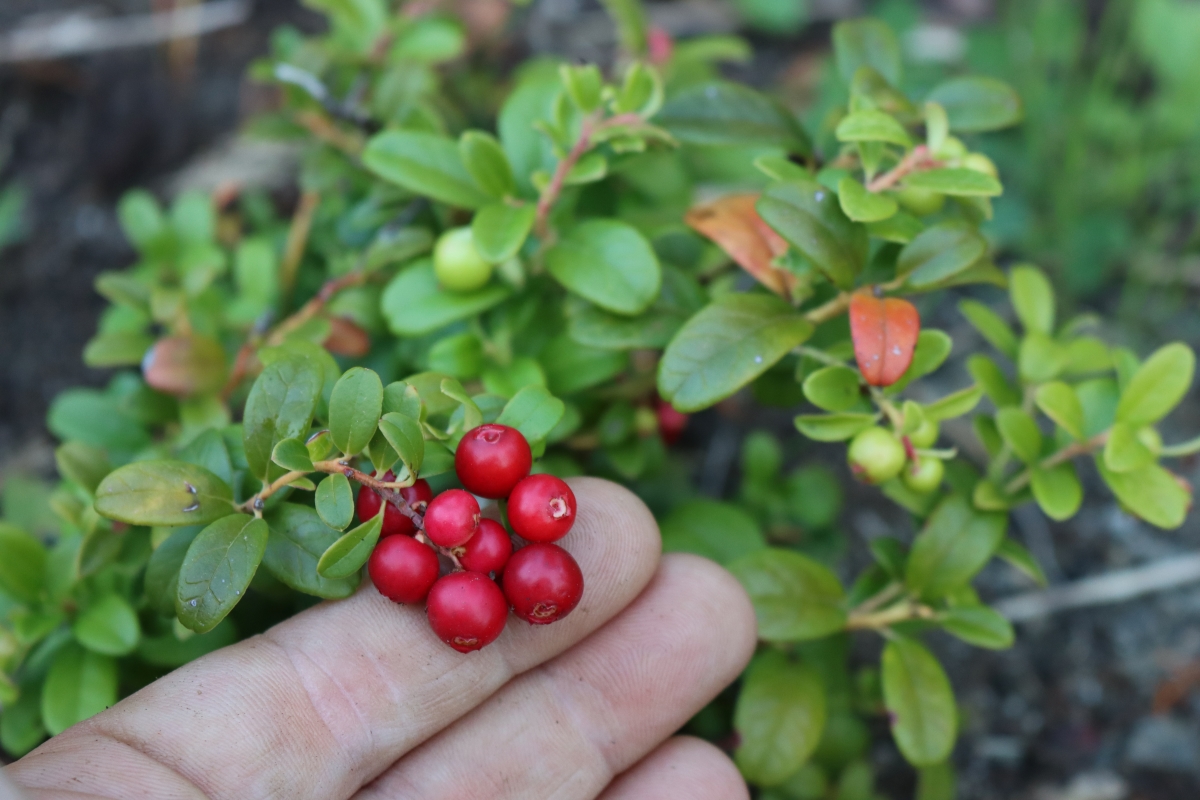
My Norwegian grandmother was always the best baker in the family, and every year she’d decorate our holiday table with literally dozens of varieties of Norwegian Christmas Cookies. With her at the helm, I never really had to focus on Scandinavian delicacies because she kept us well supplied.
A few years ago when she past, I started cooking more traditional Scandinavian food and found it really difficult to source specialty ingredients. This year I’ll be curing lamb ribs for Pinnekjøtt, so that shows you I’m not afraid of a challenge.
Not to be deterred, we’ve started growing and raising ingredients for Nordic recipes on our own. I’m still looking for a source for crowberries and cloudberries, which have somewhat specific requirements and can’t really be cultivated. Lingonberries, on the other hand, are really easy to grow!
What are Lingonberries?
Lingonberries are often called cowberries, lowbush cranberries, or whortleberries. These berries are closely related to cranberries and blueberries, producing large amounts of small red berries with a flavor similar to cranberries. These berries are much sweeter and have virtually no astringency.
They’re a low-growing perennial plant that grows on a woody shrub that grows 12-16 inches high, and spreads through underground runners or seeds. These plants spread an average of 9 to 12 inches during the first few years after planting.
Where do Lingonberries Grow?
Unlike many other berries, lingonberries thrive in cold temperatures. The plants are known to survive in temperatures as low as -50℉, and they require a minimum 800 chill hours to produce berries. Those chill hour requirements are the same for most blueberry varieties, which also require cool winters and a dormant period to thrive.
In Sweden and Norway, lingonberries grow in the wilds, thriving in the woodlands and moorlands. Unfortunately, you won’t find these berries growing wild here in the US, so with a bit of patience, learning how to grow lingonberries at home is easier than you imagine.
Living in Vermont, we are often limited due to our cold temperatures, but lingonberries are a cold-hardy plant. They grow well in our climate, and since they’re low maintenance, they do well in our permaculture garden.
We’ve been growing lingonberries for a few years now, and they’re a lovely addition to our berry garden. Not only do they produce edible, delicious berries, but the springtime blooms are bell-shaped flowers in white or pink that bees love.
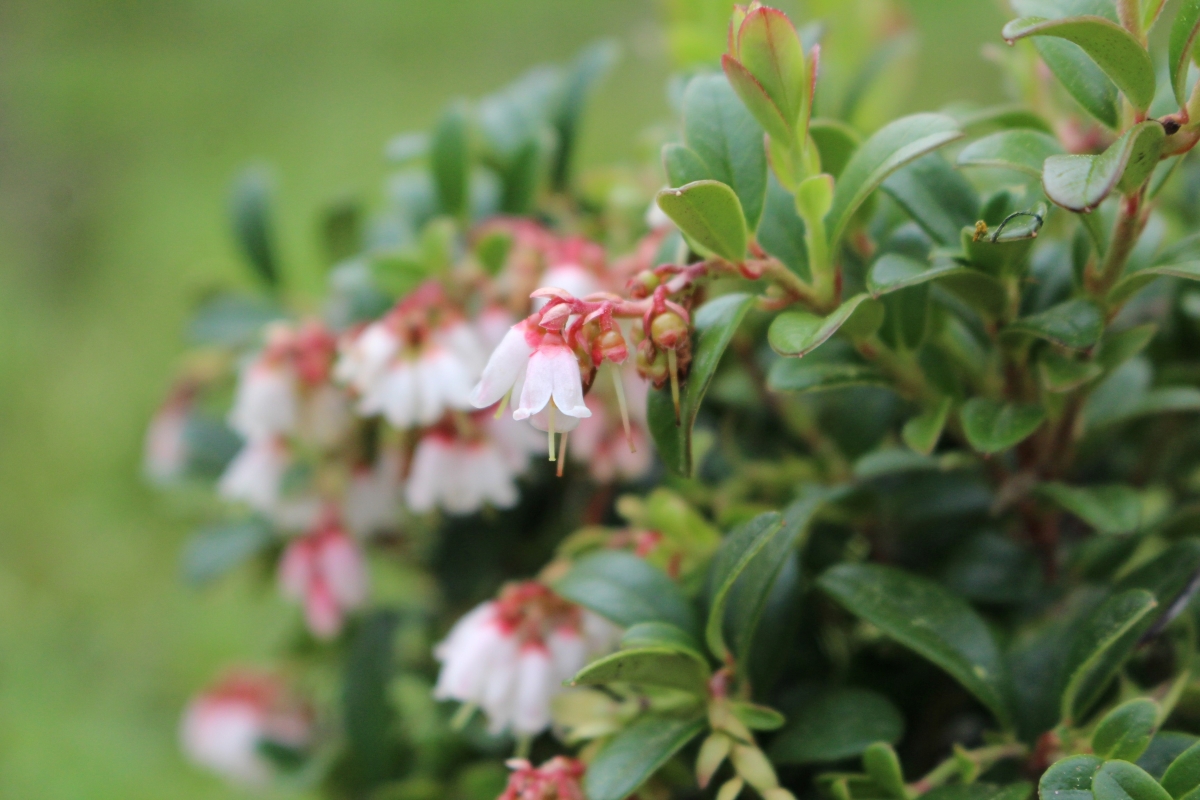
Where to Plant Lingonberries
Lingonberry plants grow best when you pick a location with full sunlight; these plants enjoy ample sunlight, averaging six to eight hours per day. They also grow well in partial shade, but full sunlight encourages larger crops.
One thing that is different about lingonberry plants is that they prefer to grow in very acidic soil. Before planting, it’s best to check your current pH range and adjust however you need. These plants grow best with a soil range between 4.2 to 5.2. If your soil is too neutral or alkaline, garden sulfur is one way to lower the pH range.
We tend to lower the pH and feed at the same time by using a granular fertilizer for acid-loving plants called Holly Tone. We use the same stuff on our homegrown cranberries and blueberries too.
Before planting, you have to prepare your garden beds, turning the soil to a depth of 6-12 inches. These plants prefer to grow in fluffy, loose soil, free of any rocks or debris that might block the root growth. Before planting, make sure to add organic matter into the soil, such as compost, well-rotted manure, or leaf mold.
I typically use a soil mix that is a blend of compost, peat moss, and sand. In this case, peat moss will make the dirt more acidic, precisely what your plants want for ideal growth. Another option is to use pine bark mulch, which increases the acidity in your soil.
The best time to plant lingonberries is in the spring, after the danger of frost has passed. They grow in USDA zones 2-6; these climates offer the most optimal growing conditions for the berries, but they also grow in containers.
Remember, these plants originate in the cold climates of the North, stretching throughout the Scandinavian countries. So, if you have cold winters, don’t worry; these plants handle it.
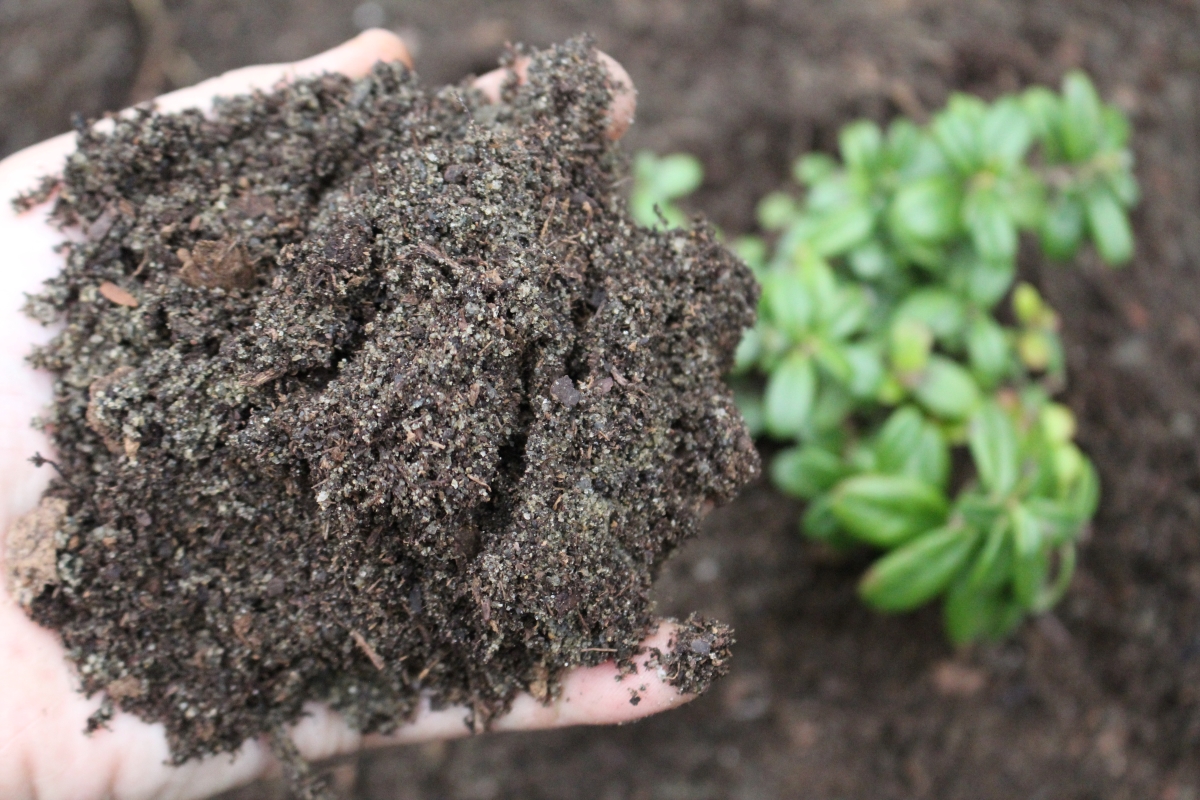
Planting Lingonberries
When planting lingonberries in your garden, take care because they spread like a groundcover, filling in like strawberry plants. You need to plant these berries somewhere that gives them ample space to grow and sprawl out. When planting, be sure to space the plants 12-18 inches apart in their rows and space the rows four to five feet apart.
I suggest marking and measuring where you want to plant each of your plants before you get started. Then, dig holes that are two times the size of the root ball of the lingonberry plants you have available.
Place your lingonberry plant in the hole, ensuring that the root ball is level with the soil. Fill the hole back in with soil, pressing the ground firmly into the hole. Then, water deeply, which helps seal off any air pockets around the root ball.
After watering, I like to spread mulch around the plant. Spreading a 2 to 4-inch layer of mulch across the soil helps to retain moisture and reduce the weeds in your garden that compete for nutrients.
Weeds might look ugly to you, but they pose a more significant problem because they compete for space, nutrients, and water. Lingonberries will thrive once they’ve sent out runners and filled in the space, but early on they’re very vulnerable to weedy competition.
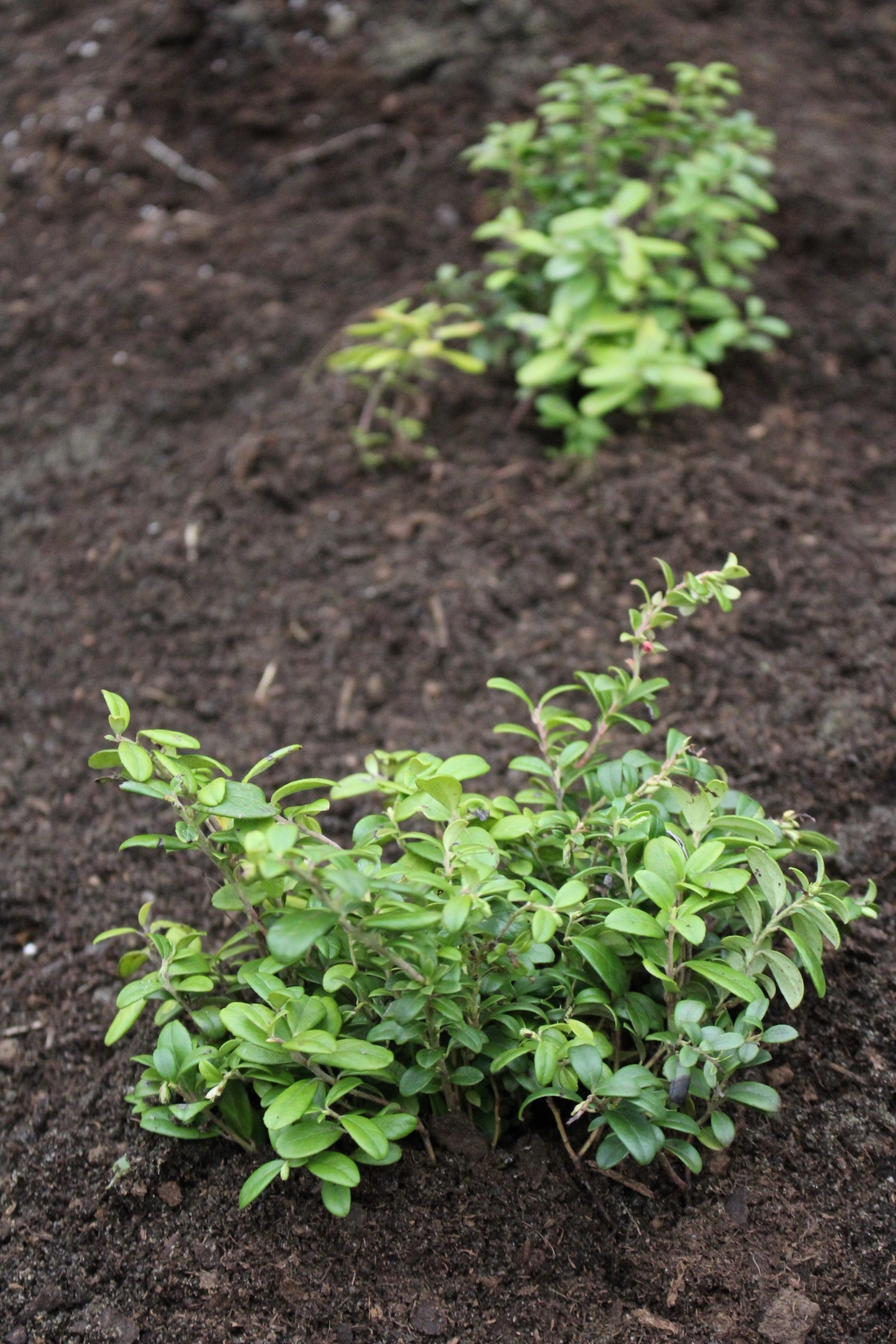
Where to Buy Lingonberry Plants
Check to see if your local garden nursery sells lingonberry plants, as a surprising number do these days, alongside blueberries and cranberries in the fruiting plants’ section. If they don’t, they might be able to acquire them for you.
You only have to grow one plant because these are self-pollinating, but growing two plants or two varieties will help increase the size of your berries and produce a higher yield.
I bought mine in bulk from Raintree Nursery; they offer great sales and prices. You also can buy them from Fedco Trees, which takes orders in late winter and early spring.
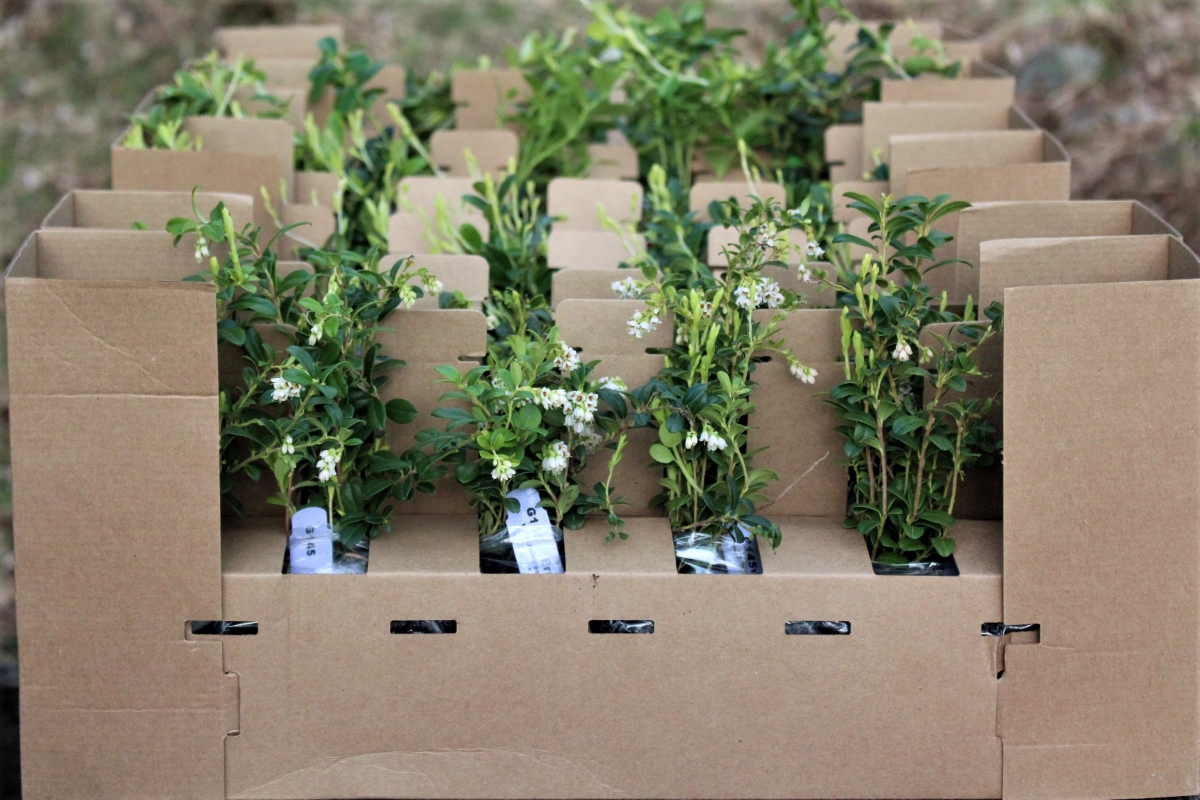
Lingonberry Plant Care
Once your lingonberry plants are growing in your garden, learning how to take proper care of them is essential.
Keeping your plants well-watered is crucial, especially during the primary growing season and dry spells. Lingonberry plants require one to two inches of rain per week when they are in their growth season. Once the plant is established, you can decrease the needed water by half, but consistency is the most crucial watering part.
Most gardeners prefer to use a drip or soaker hose irrigation system because it delivers water at the soil level. If you water your plants (any plants really) overhead, you increase the risk of diseases. Ensure water during the early mornings to give the foliage time to dry off before the heat of the day.
You shouldn’t prune these bushes in the first five years except for removing dead branches. Remove flowers in the first year to strengthen their growth; this tells the plant to stop focusing on fruiting and keep growing.
When you reach the sixth year of growth, cut back, leaving only the most vigorous canes in the early spring. That will keep your plants growing well for years to come.
As fall and winter approaches, stop watering as early as September unless the soil is extremely dry. You want to send the plants into dormancy and apply a thick layer of mulch when the ground freezes in the fall to prevent root damage. Root damage is common in areas that experience regular freezing and thawing cycles throughout winter.
Common Lingonberry Problems
Two of the most common diseases that lingonberry plants experience are bacterial leaf spot and botrytis.
- Bacterial leaf spot starts with small spots that enlarge and become angular, and it might affect flower heads as well.
- Botrytis is a fungal disease that causes a grey mold to form on the plant’s flowers, leaves, stems, and buds.
Treatment for these diseases differ, but for both of them, you should always remove the infected plants and avoid overhead watering, which is one of the critical ways that disease transfer in your garden. Always use proper spacing when planting your berry plants because it allows for good air circulation.
When it comes to pests, lingonberries frequently face aphids, armyworms, mealybugs, and whiteflies. Encouraging natural enemies is one of the best ways to battle any garden pest; try releasing lady beetles and parasitic wasps that take care of various pests.
Insecticidal soaps and neem oil are two organic choices if the infestations end up severe in your garden.
Harvesting Lingonberries
Lingonberries produce two harvests: late summer and early fall. As the plants begin to grow berries and ripen, you should cover the bushes with bird netting but keep the net off the berries. Birds love to munch on these berries; who can blame them?
Wait until your berries are firm and fully red before ripening. The best way to pick lingonberries is by hand or with a blueberry rake that’s also commonly used to collect wild blueberries. It’s often a tedious harvest since the berries are small, but a rake really speeds up the process.
The berries ripen over several weeks, with different varieties ripening at intervals over the fruiting season.
Once harvested, it’s best to store them between 32-40℉ (in the refrigerator). Unlike other berries, these store for 8 to 12 weeks in the refrigerator, so you don’t have to rush to use or freeze them.
They also freeze well for later use. I typically freeze all of my lingonberries in a single layer on a baking sheet and then transfer them to a plastic bag. Then, when all of the berries are harvested, and the plants stop producing, I use them to make different recipes.
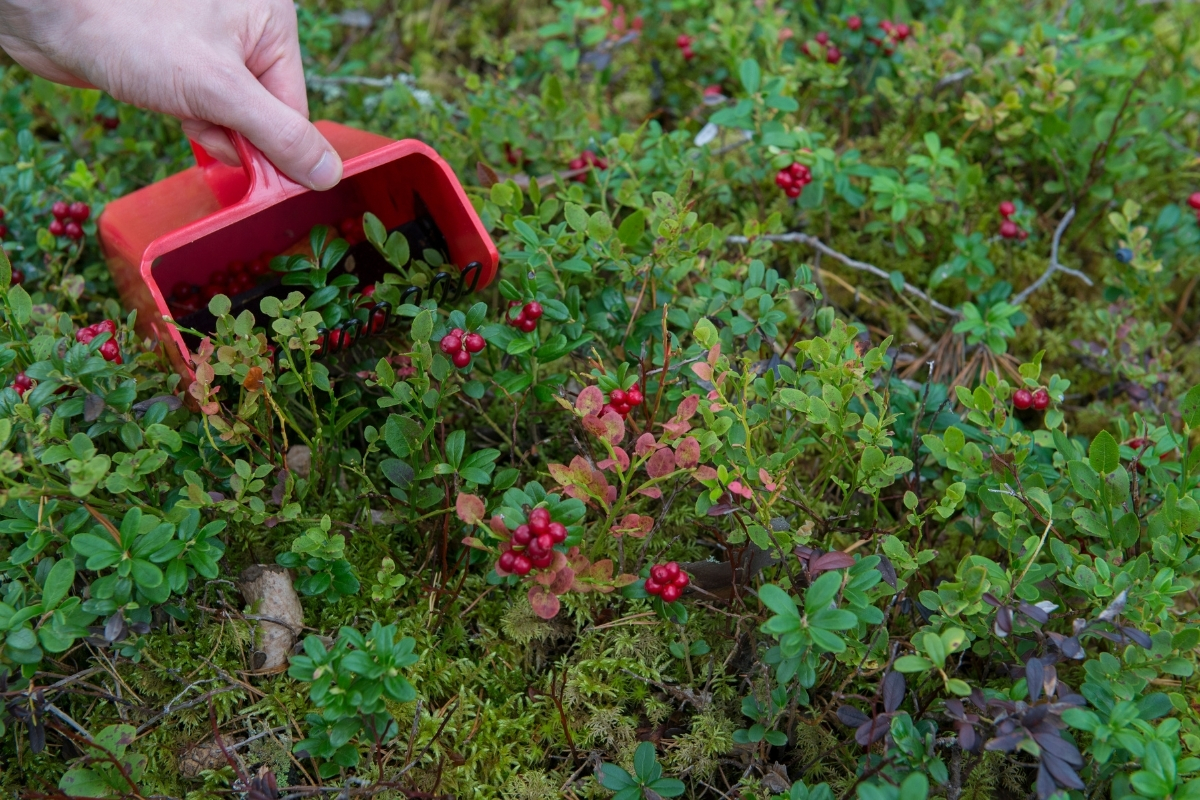
Lingonberry Recipes
Once you have all of your homegrown lingonberries, you need some delicious recipes to use them. Give these a try!
- Lingonberry Jam
- Lingonberry Sauce
- Swedish Meatballs with Lingonberry Sauce
- Lingonberries & Cream Hand Pies
- Lingonberry Jam Muffins
- Braised Venison with Lingonberry Sauce
- Cinnamon Rolls with Lingonberries
Fruit Growing Guides
Looking for more tasty fruits to grow at home?
- How to Grow Honeyberries
- How to Grow Husk Cherries
- How to Grow Cornelian Cherry
- How to Grow Nanking Cherry
- How to Grow Shipova
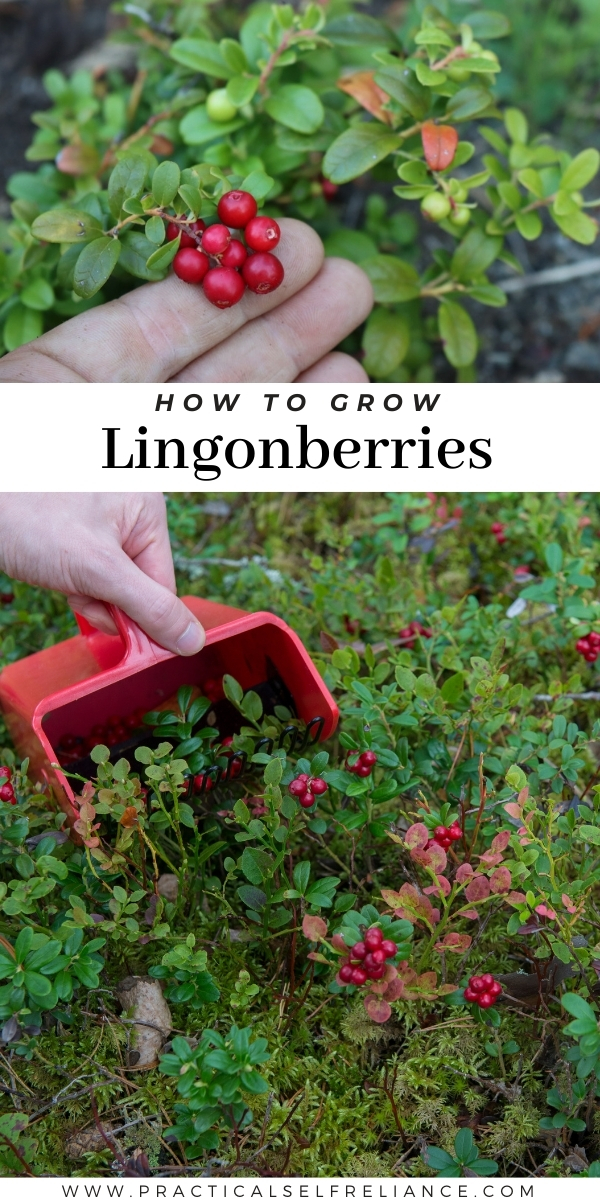




Hello,
We are a bit short on space to grow lingonberries, would you please suggest reputable places to buy authentic lingonberries (from) shipped to USA?
Do you have a local garden nursery that you can check? If not you can try https://raintreenursery.com/search?type=product&q=lingonberry* or https://www.fedcoseeds.com/trees/
It doesn’t like deciduous forests but I still grow em with lowbush blueberry and wintergreen around haskaps bushes which are under a mature red maple tree, it will tolerate alot of shade and creep around looking for any opportunity to colonize new grounds, it loves woodchips.
You just made my day!!! We are Norwegian, and love the berries.
I can’t wait to grow these!!! We live in northern Michigan. They should do well here. Thank you for sharing this and all your helpful information. I will be definitely trying a few of your recipes too.
Karen Larsen
You’re welcome. I’m so glad that you enjoyed the post. Keep us updated and let us know how it goes.
I just went to Raintree and order four plants can’t wait until next spring. thank you.
You’re quite welcome!
Thank you so much for the detailed tutorial. We planted lingonberries in our vegetable garden where they did absolutely nothing for 2 years – soil likely too alkaline. As a last ditch effort we put them into our woods under the trees and they have thrived! We first saw these on a trip to the Baltics where they combined them with creamed horseradish to make a condiment. It is delicious!
You’re very welcome. So glad you found a spot for them to thrive.
I love this. We have lingonberries at a local Swedish restaurant and you are right–they don’t have the bitterness that cranberries do, which I have tried to substitute. Our Wisconsin soil is very alkaline so I’d probably need to grow in a raised bed. My current beds are 4′ x 10′. Would giving them a bed of their own provide enough space?
Definitely, that’s more than enough space! We have them in a raised bed of a similar size, just plant them in leaving about a foot between each plant in all directions and they’ll take over as a groundcover within a few years.
Thanks–added to my wish list!